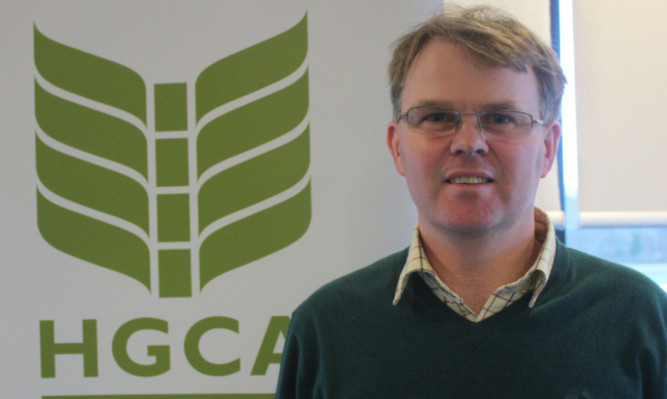Balbirnie Home Farms at Markinch is not short of arable tackle but, according to farm manager David Aglen, the most useful is his soil porosity and aeration determination equipment (SPADE).
“I carry my SPADE in the Land Rover wherever I go on the farm, and I am always amazed at what I can find with it,” he told an agronomy seminar at Perth yesterday.
The event, run jointly by Home Grown Cereals Authority (HGCA) and Scotland’s Rural College (SRUC), was billed as seeking “agronomic solutions for local challenges”, and none of these ranks higher than soil compaction, believes Mr Aglen.
The Balfour family’s Balbirnie Home Farms runs to 1,140 hectares, with all but 240 hectares devoted to arable cropping including cereals, field vegetables, carrots and potatoes.
Much of the grassland is on the flanks of the East Lomond and supports a 220-strong suckler cow herd.
“The biggest problem we face is in harvesting root crops , especially carrots.
“The allure of course is the cash that these crops can bring in, but it is just possible that the damage might not be worth it,” he said.
Some of the illustrations in his presentation showed the sort of damage caused by dragging loaded trailers alongside harvesters and out of fields. Tractor power and brute force made the job possible, but the compaction and loss of soil structures, according to his SPADE, sometimes extended well below the depth of the field drains.
He added: “That is a real problem because using a subsoiler at that depth is impractical. Even if a machine would work at that depth, it would obviously smash the drains.”
He had pondered whether using deep-rooting cover crops as part of his Environmental Focus Area obligation would help.
The main answer, however, was to reduce compaction wherever possible.
The large one-pass grain drill used previously on the farms was not helping, he believed. The load on each of the back tyres of the tractor amounted to eight tonnes. The tyres themselves were as wide section as possible, but tyre pressure could not safely be reduced below 19 psi (pounds per square inch).
The smaller tractor and one-pass drill used now had lightened the total load by five tonnes and allowed tyre pressure to be reduced to 12 psi.
“This is an improvement, but my ultimate goal is to move to a no-till system.
“We tried it last season to direct-drill cereals into oat stubble, and the results were very good apart from some sterile brome in one part of the field.
“If I had been aware of the problem sooner I could have tackled it better,” said Mr Aglen.
He had trialled John Deere and Claydon drills.
My conclusion is that no-till improved soil structure and surface drainage. I reckon it improved ‘trafficability’ considerably, and allowed the fertiliser spreader and the sprayer on to the land about a week earlier than on land that had been ploughed.
“The bottom line is that as costs reduce, profits rise,” he added.
There was a general reluctance to try new technology such as no-till, he believed, and it was partly driven by an “aye been” attitude.
The research effort nationally and commercially was very limited, and this had to be addressed, Mr Aglen believed.
This was particularly the case as regards cover and catch crops and the benefits they might bring in terms of soils structure and increasing organic matter.
There was also a reluctance among farmers to share machinery.
A three-metre no-till drill such as the one he had tried could easily sow several thousand acres annually.
As to the next steps at Balbirnie Home Farms, building up organic matter levels remains important, using materials such as paper waste.
Catch crops such as stubble turnips after cereals would allow more integration of livestock with the arable rotation.
There was the tantalising prospect that cereals could be made profitable enough for farmers not to need high-value but soil-damaging cash crops in the rotation.
That was a long way off, however, and much more research would be needed before this was the case.
